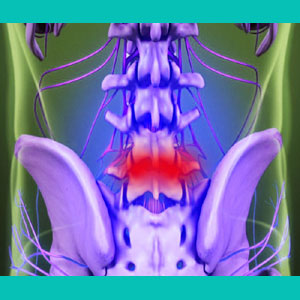
Herniated discs in tall people are indeed more common than disc abnormalities in shorter people. This is a fact. However, why does this occur?
Not only are bulging discs more commonplace in people above average height, but general back and neck pain are also more frequently reported by tall people. What is the connection between height and chronic back issues?
This interesting discussion focuses on the relationship between a person’s height and their chance of suffering from a herniated disc condition in their spine. If you were wondering if height plays in a role in the development of back problems, then you have come to the right place.
Frequency of Herniated Discs in Tall People
Statistics do demonstrate the bulging and herniated discs are definitely more frequently seen in people above average height, compared to their occurrence in people who are considered below average height. The ratio is not dramatic, but herniated disc frequency definitely favors taller, rather than shorter.
This fact holds true for both herniated discs in the neck and in the lower back regions. There is not enough evidence to conclude if thoracic herniated discs are linked to height or not, since these locations tend to be much less commonplace across all height, age and other demographics.
Additionally, symptomatic versions of herniated discs tend to occur slightly more often in taller people, compared to shorter people. This means that even when a taller person and shorter person demonstrate the exact same type of disc abnormality, the taller person will indeed have a slightly greater chance of suffering symptoms from the disc, while the shorter will have a lesser chance of symptomatic activity.
Why Do Tall People Suffer Herniated Discs More Often?
Doctors have researched this question somewhat, although studies focused on this particular aspect of bulging discs are in limited supply. However, there are obvious reasons why a taller person might suffer an increased incidence of herniations, as well as an increased risk of pain from these herniations based on basic anatomy and physics:
Longer spines will feature more space between each vertebral bone. Discs will naturally be taller and more prone to suffering from forces acting on them, much in the way a taller building would be susceptible to forces compared to a lower structure.
The soft tissues that regulate movement of the spine must stretch further in taller people. In similar fashion, these greater lengths make these tissues more susceptible to force being applied, potentially leading to injury and instability.
The length of the spine itself acts as a lever when forces of movement are calculated. The longer the lever, the more force is generated in any one place of the vertebral column. When this force acts on a singular disc structure, the potential for injury increases compared to similar movements generating less force in a shorter spine.
Taller people also use more anatomical resources simply to maintain good posture and ergonomic movement. There is more to move and more height to stabilize, which certainly disposes taller people to tissue overexertion, strain and trauma more frequently and chronically compared to shorter people.
Herniated Discs in Tall People Experiences
In my youth, I was 6’3” tall. (I shrunk an inch now with age…) I developed my first disc issues right around the time of my greatest growth spurt in my late teenage years. Was this a coincidence? Probably not… I was super active and regularly stressed my body. I did not change these habits, despite growing quickly and this probably contributed to the eventuality of me suffering 12 herniated discs across almost all areas of the spine. In my advocacy, education and research work over the past 20 years, some of the worst cases of back pain I have witnessed occurred in taller people, as well.
Is it important to relate herniated discs to height or chronic pain to height? Not necessarily. However, it is a fascinating topic for medical researchers to be sure. I am still tall, but do not have pain from my various disc issues. I do believe that height is a factor in the occurrence of spinal structural change, as well as the incidence of pain, but it is not an inherent factor. This means that many more factors are far more important to consider and just because a person is taller than average does not mean that they will have back problems during life. They should be mindful of their back, however, since the very physical nature of their frames might dispose them towards injury in circumstances that may not traumatize a shorter person. Take it for what it’s worth!
Herniated Disc > My Herniated Disc Story > Herniated Discs in Tall People





